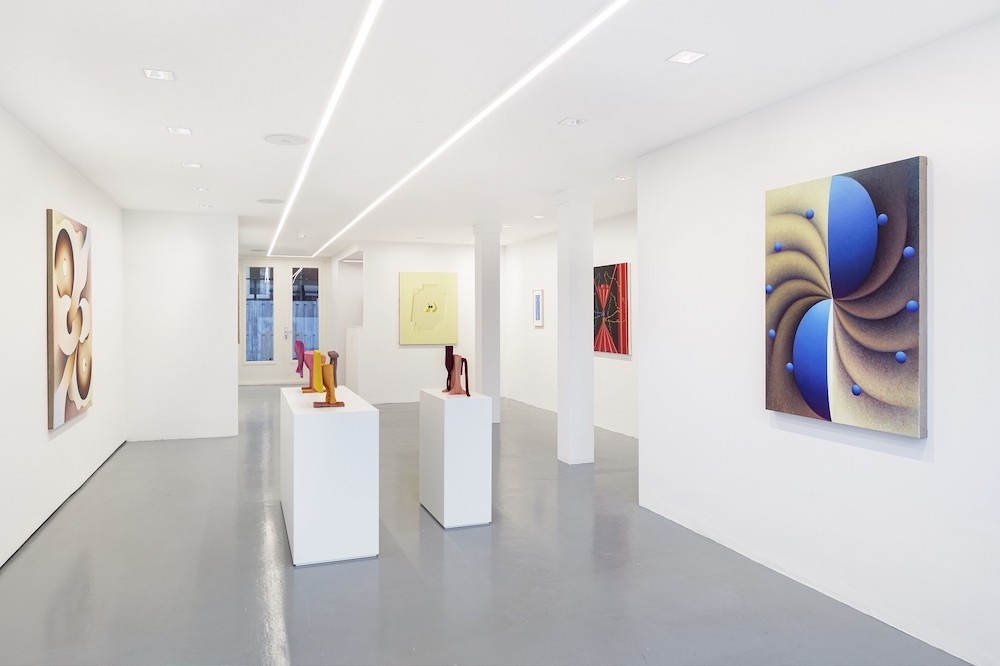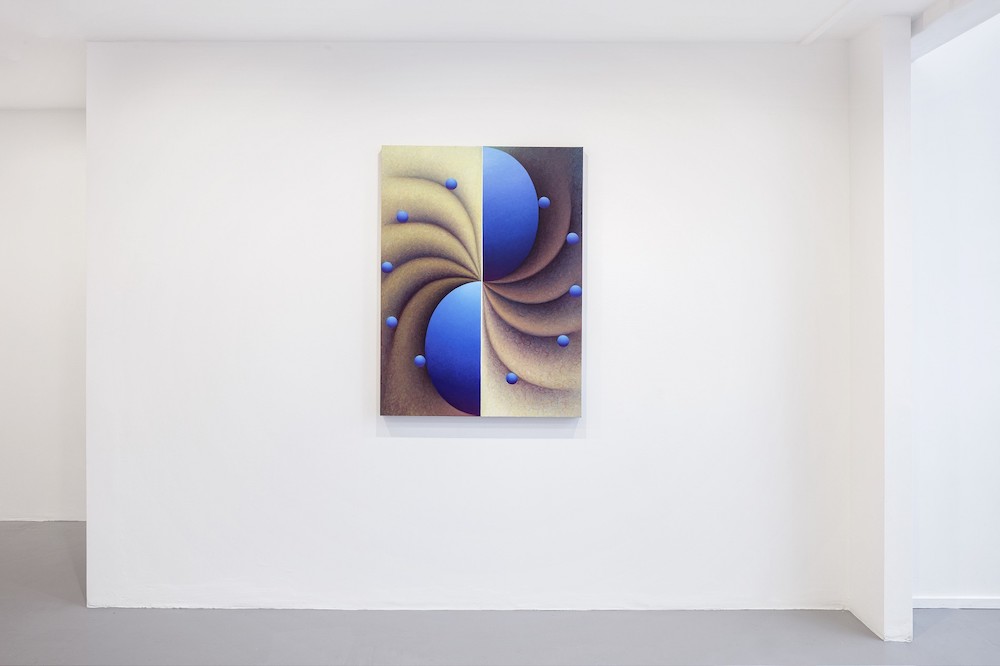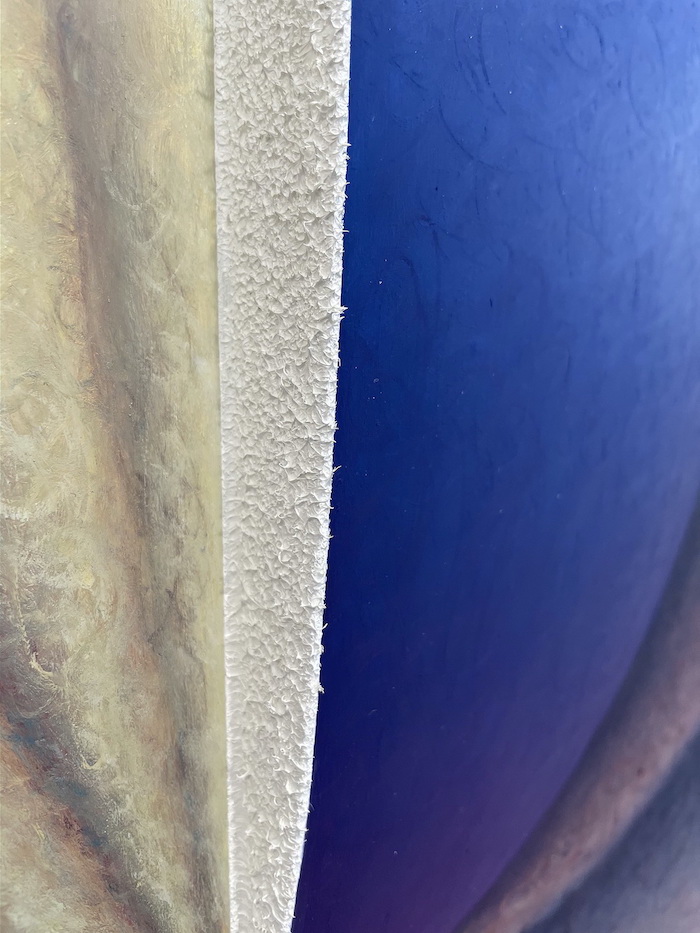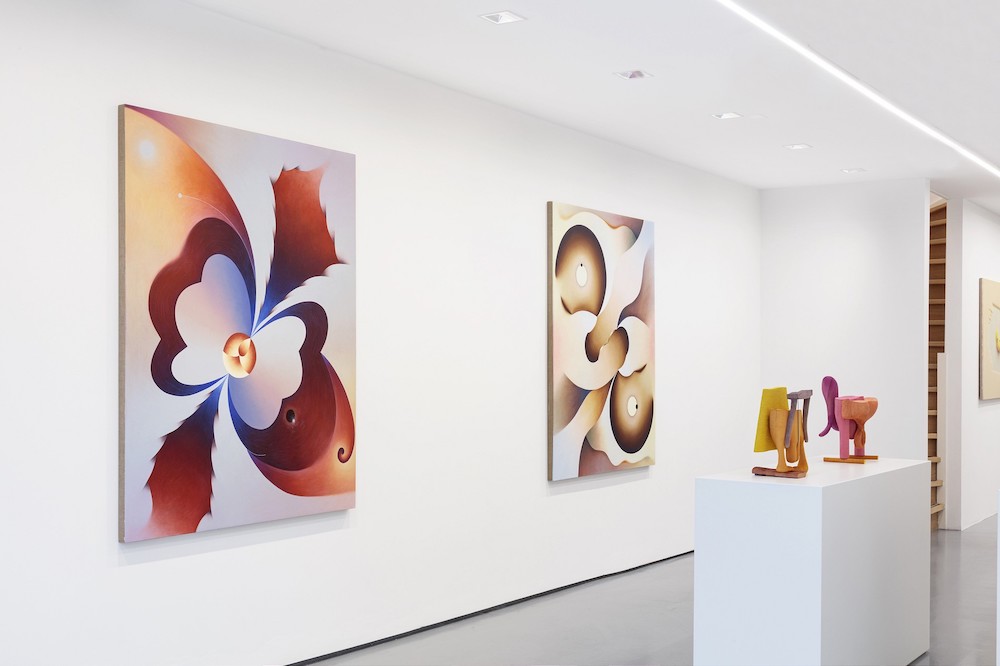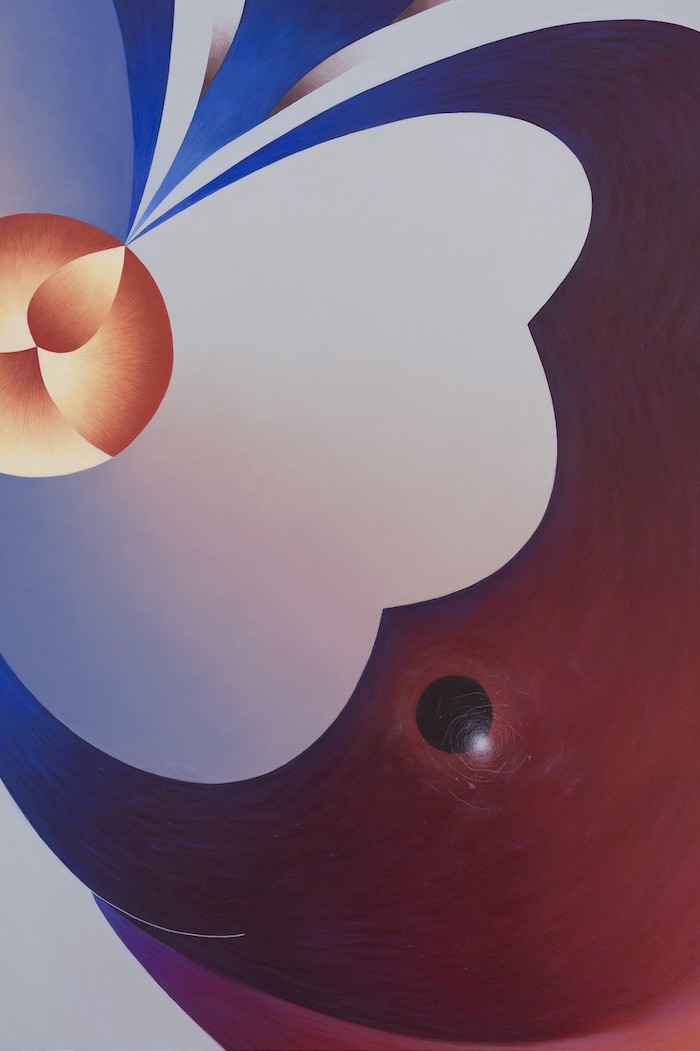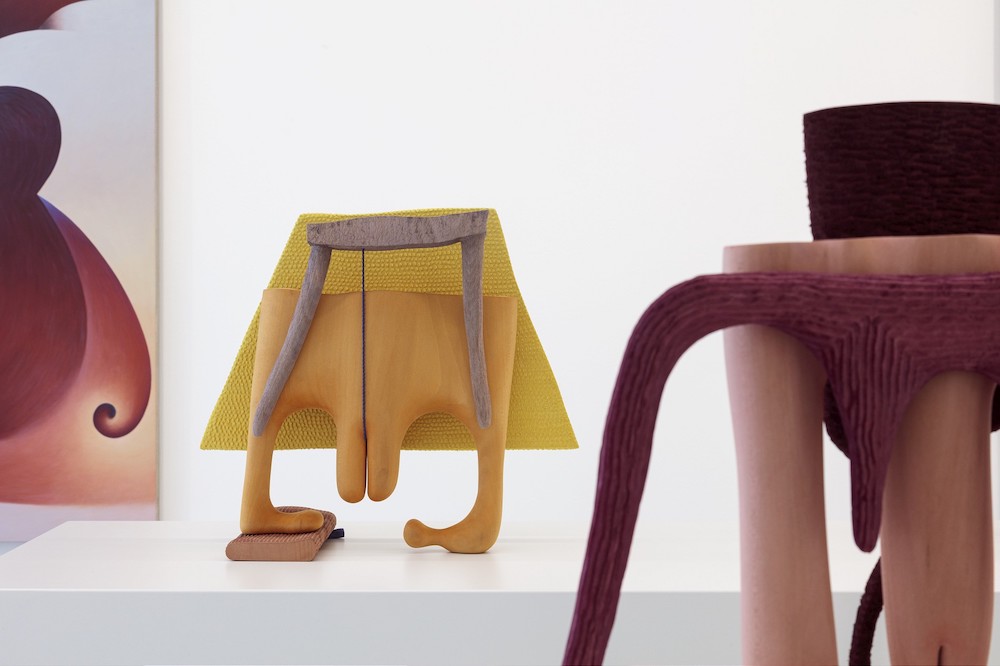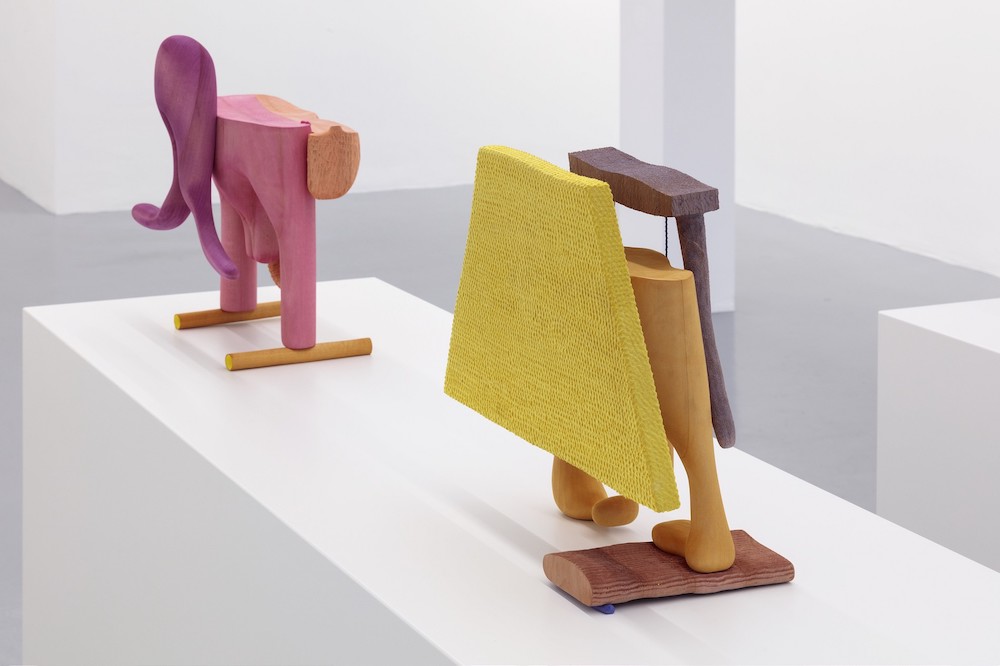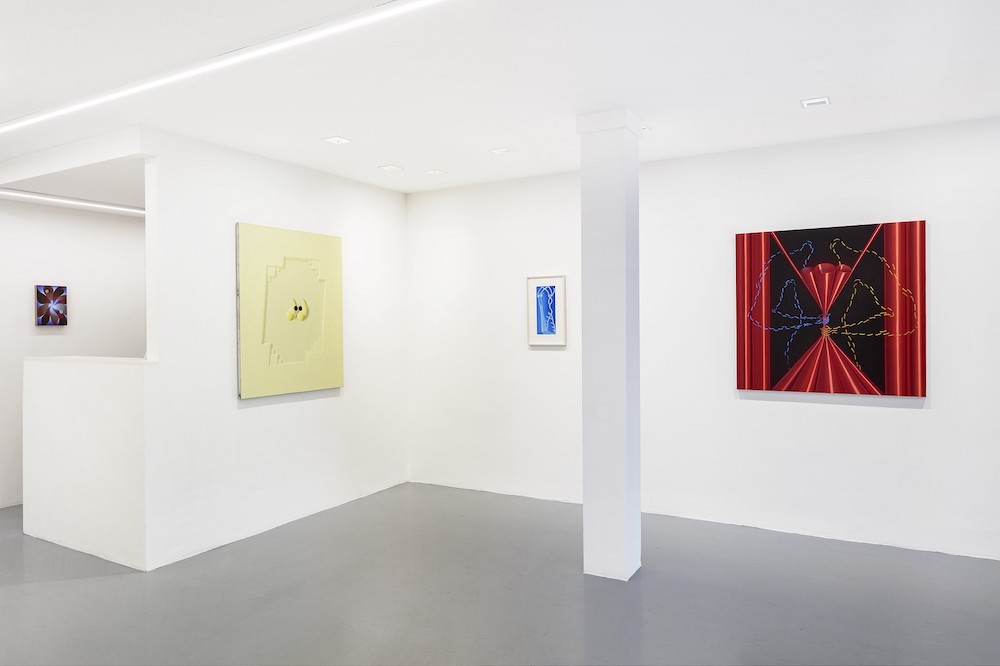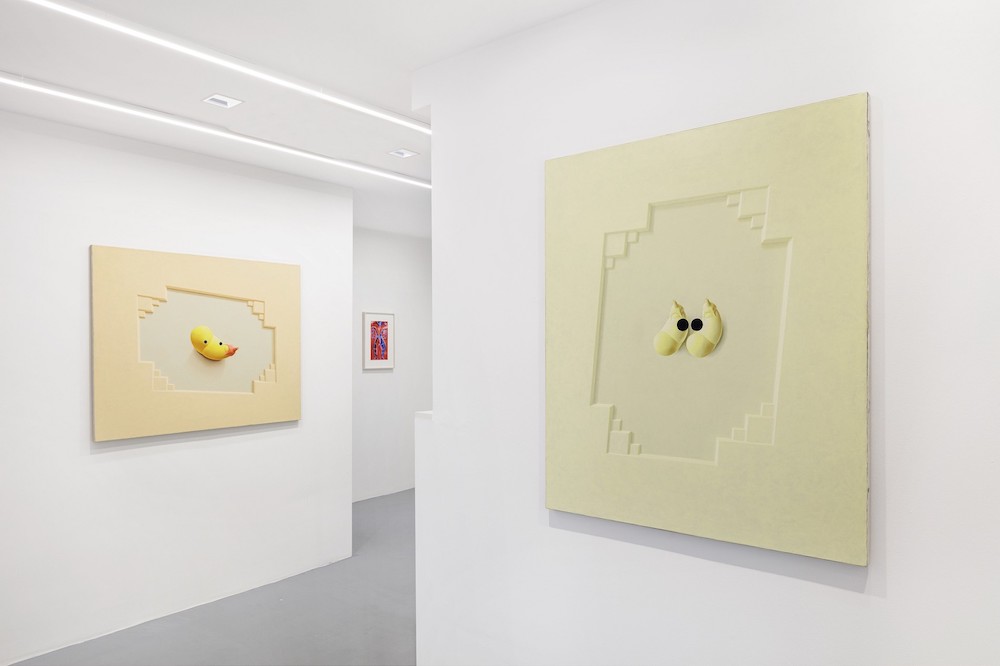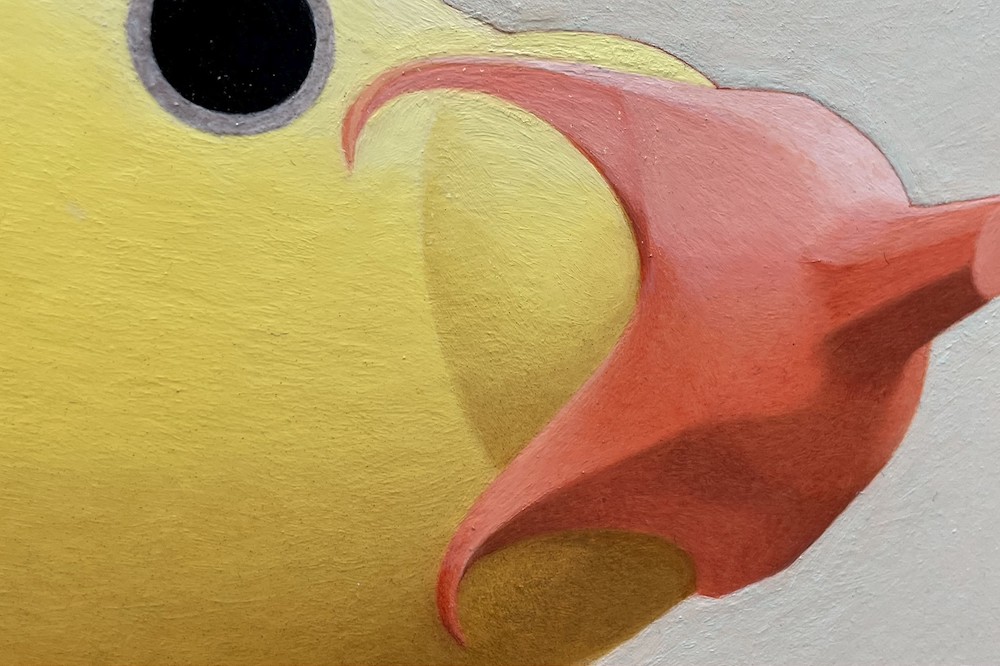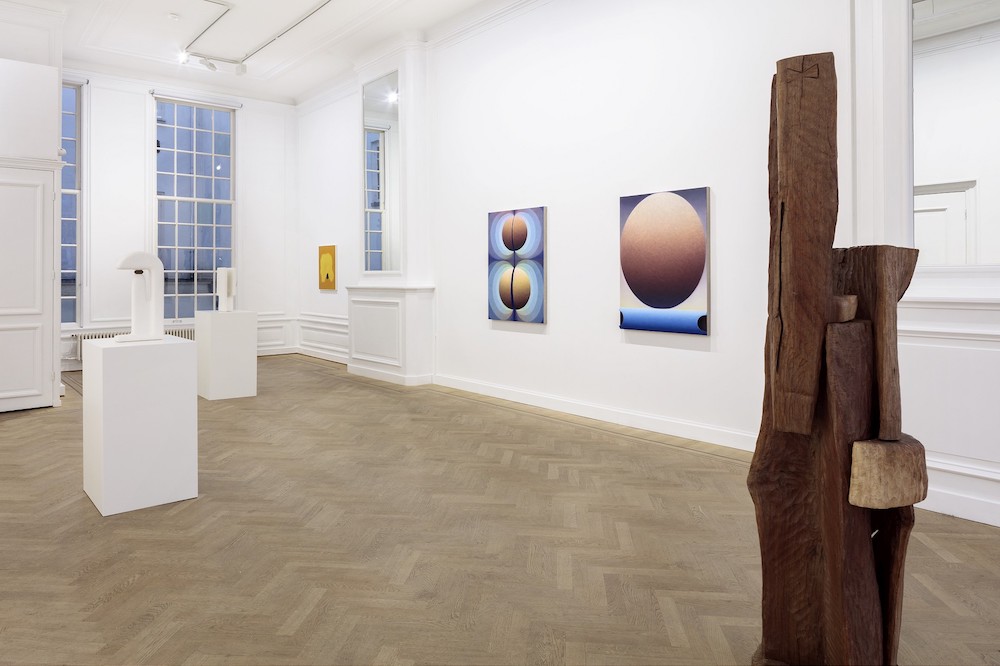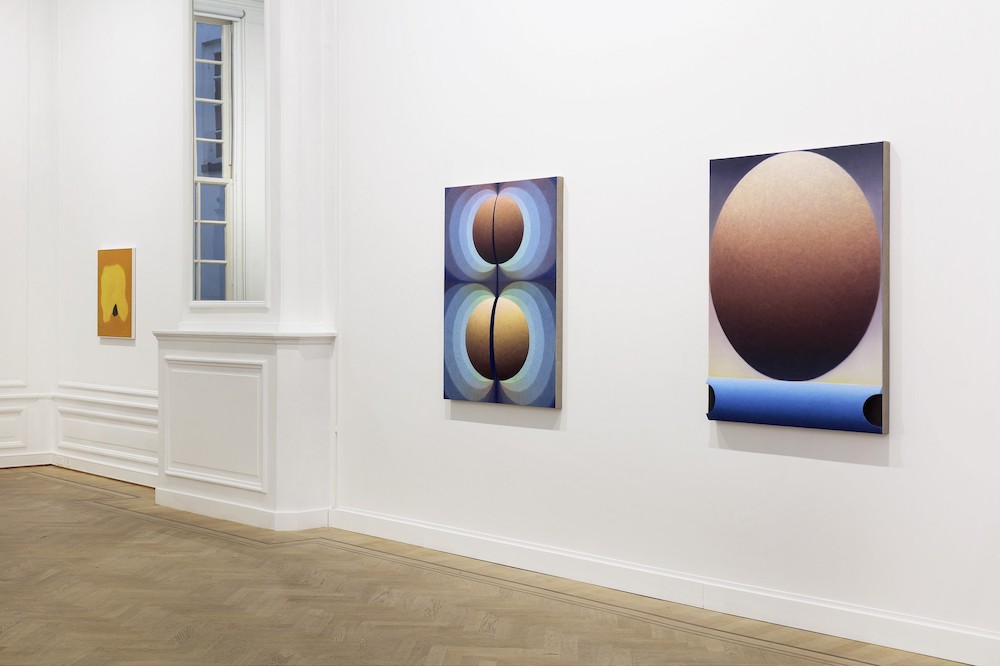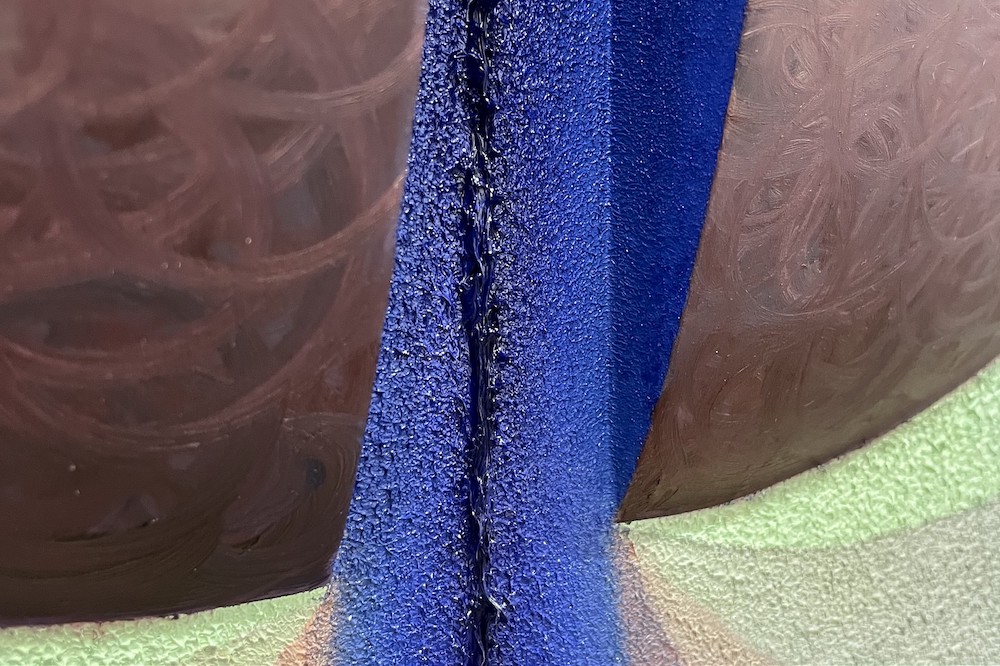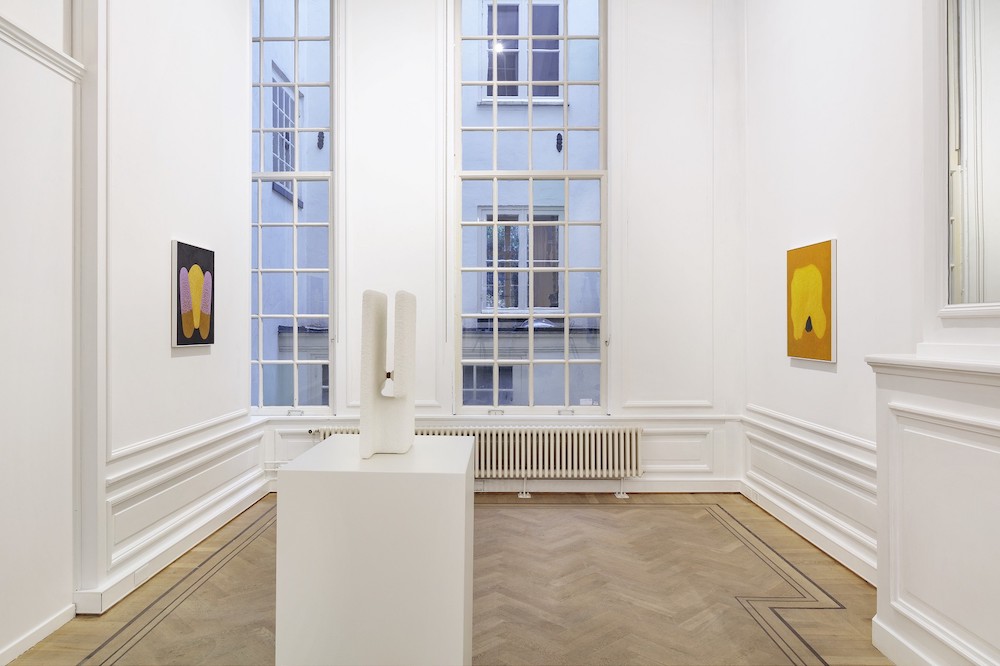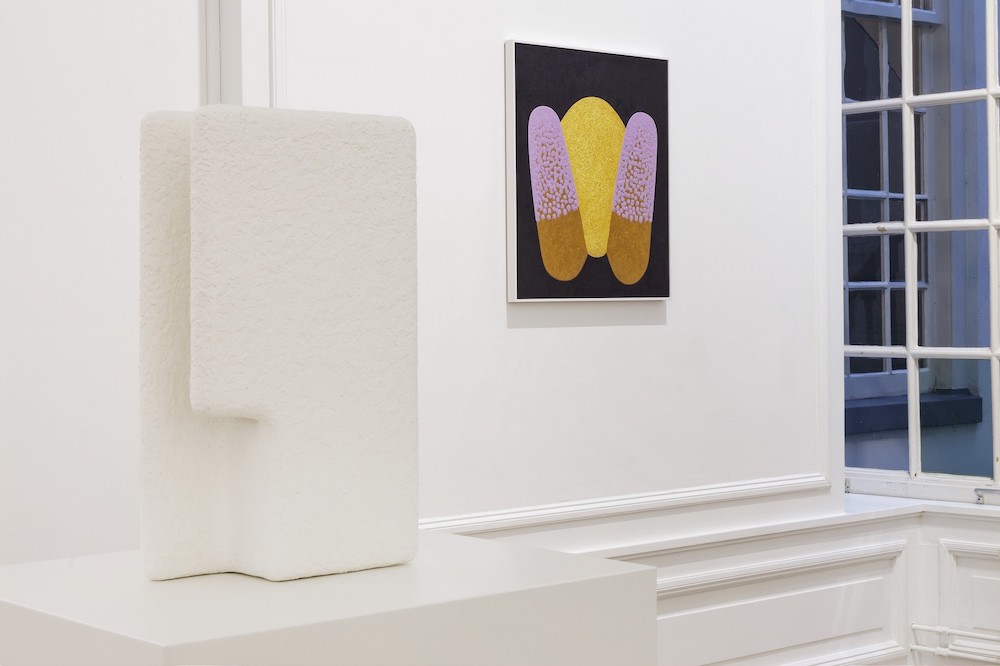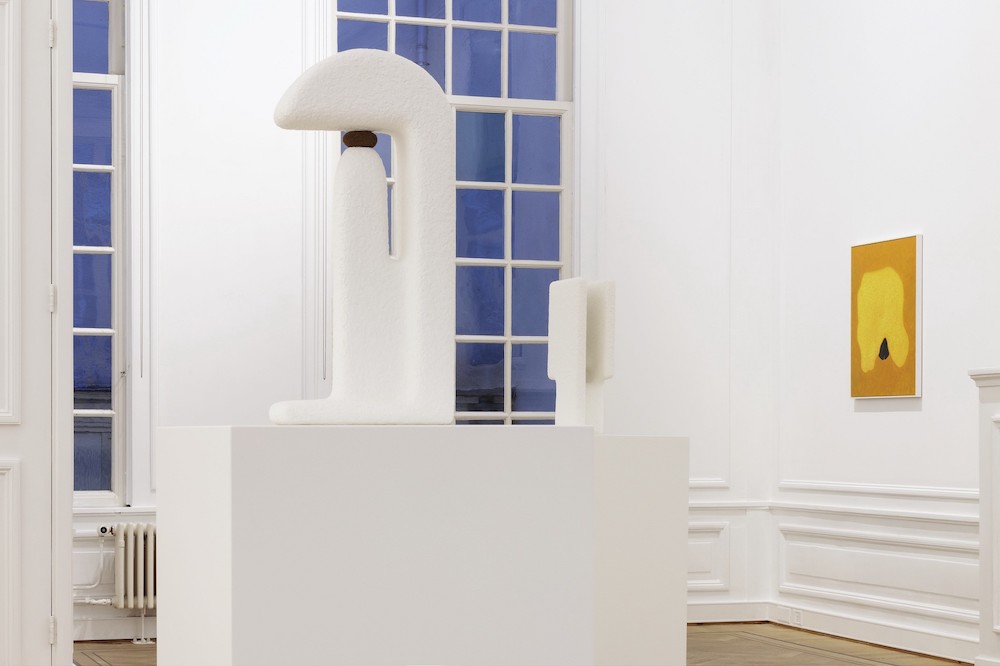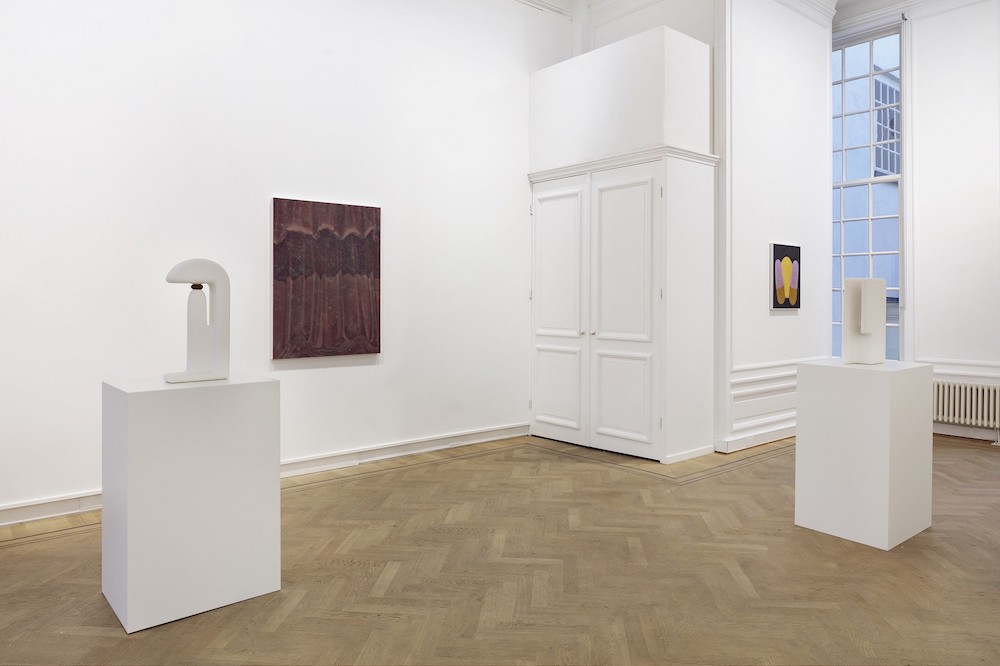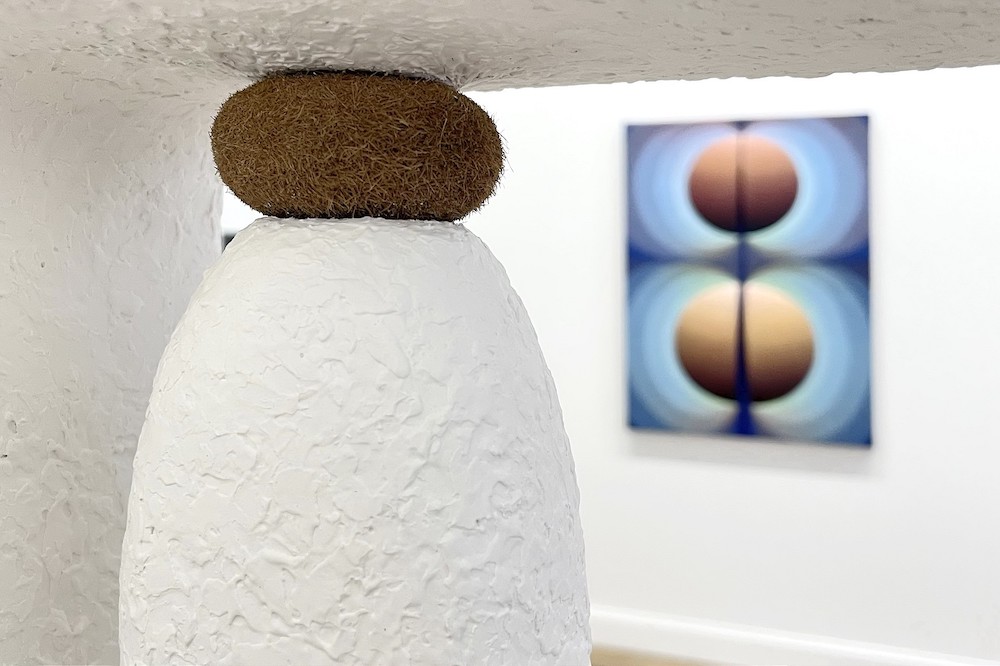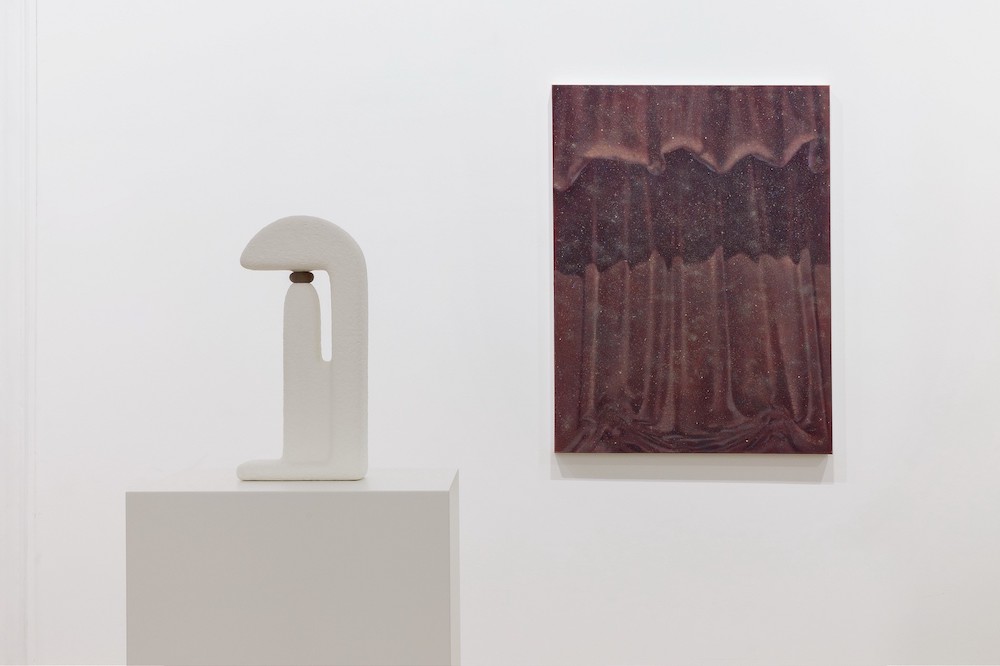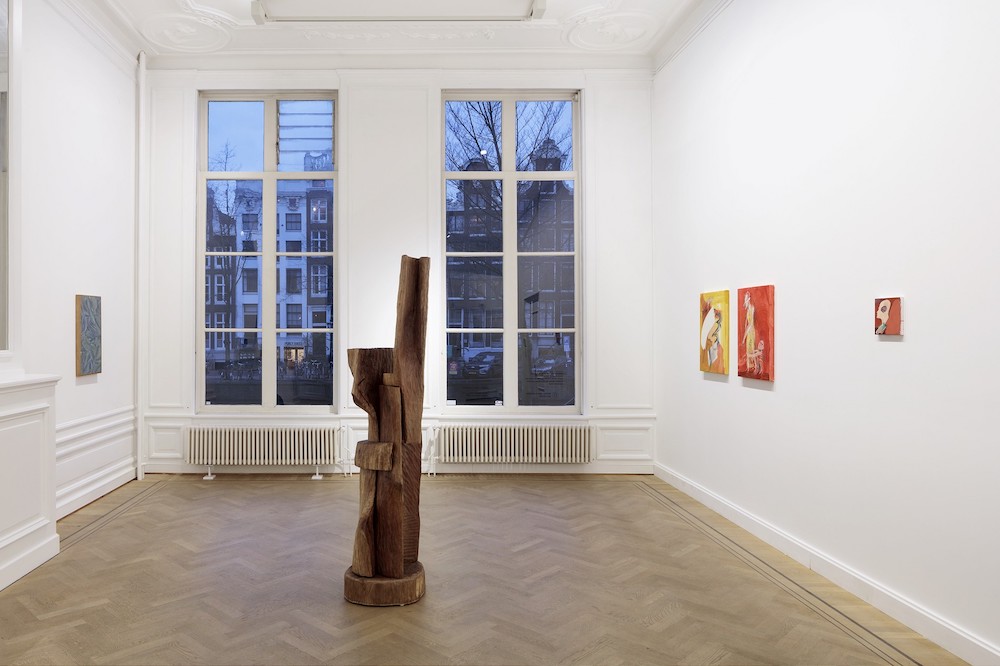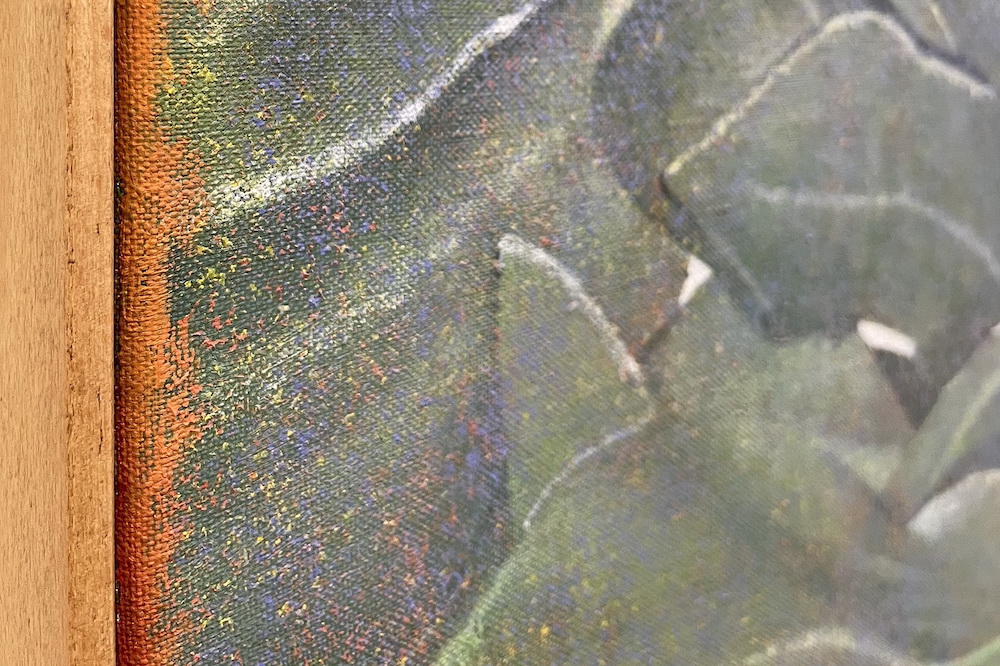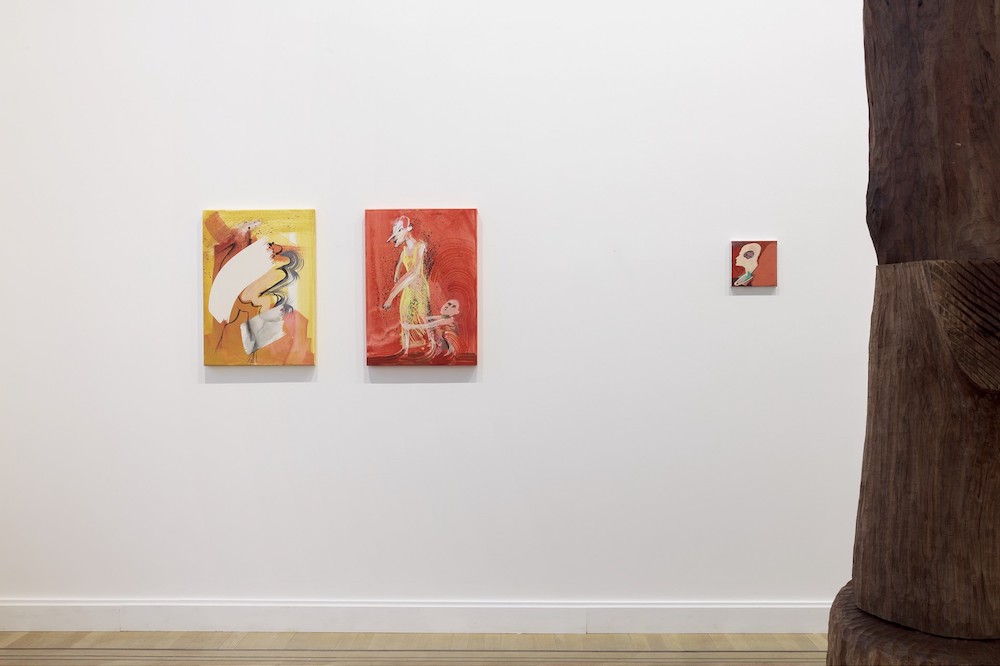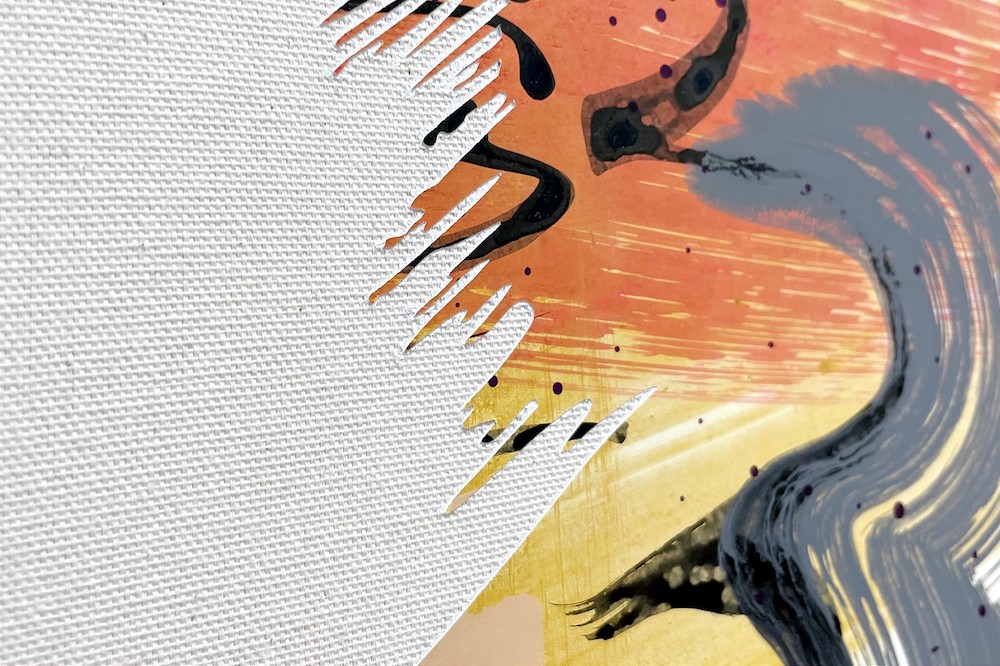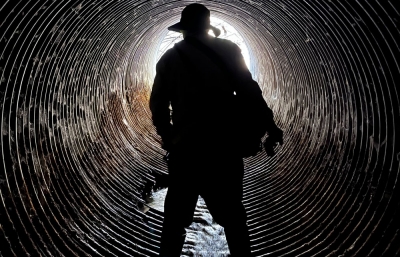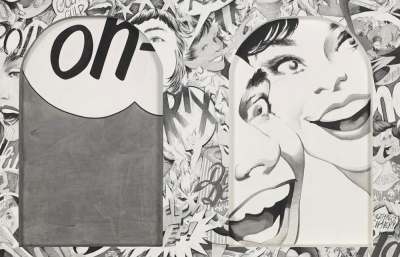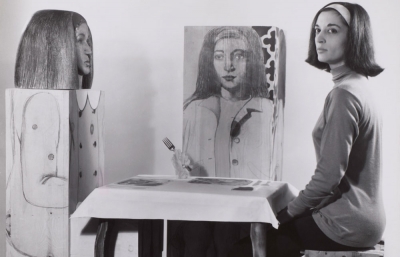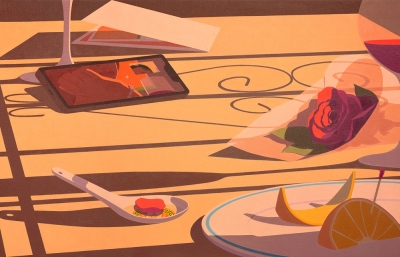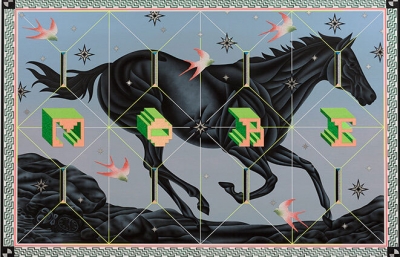As we previously previewed in our Winter Quarterly, Grimm Gallery is currently hosting a major group exhibition curated by Loie Hollowell, taking over both of their Amsterdam spaces. Romancing the Surface features works by "nine artists who explore the sensorial dynamics of materiality in relation to the physical nature of both painting and sculpture," and we were lucky to have a closeup look and fully enjoy these highly tactile works this past week.
The exhibition itself was planned a long time ago as a celebration of sorts, a way to start a new year by showing works from artists that never exhibited in the city before (besides Hollowell and Louise Giovanelli), and provide art lovers a chance to experience these captivating works in person. With a great focus on utilizing the materiality of the mediums or creating an illusion of sorts on the very surface of the work, the first-hand encounter was the major drive to put such a presentation together. Unfortunately, the installed works are waiting for a better epidemiologic situation in which the gallery will be allowed to welcome the visitors to their spaces and we wanted to share our experience with our readers.
As an artist whose own vibrant sculptural paintings regularly feature shapes protruding outward from the canvas, Hollowell (who was featured in our Spring 2020 issue), clearly has a great eye for recognizing other artists whose work is focused on the complexity of form, light, and color. The examples of her work included in the show are all built on simple compositions which are in reality simplified versions of organic, human forms, abstracted into geometric shapes that interact with one another. Adorned with the most delicate textures and rich, light-infused surfaces, these semi-sculptural pieces feel both as implosions and explosions of radiating luminosity. The way she captures the shine on the surface of her work is similar to the oils by Giovanelli, which, figurative in their core, regularly get intensified and abstracted through unusual, focused framing choices. Further on, while interested in the most formal foundations of painting, Manchester-based artist tends to disrupt the elegant glimmer of her visuals with dust and paint speckles she applies on top of the masterfully rendered images.
Also working within the classical painterly canon, Daniel Sinsel manipulates the viewer’s sense of perspective and material by using Tromp L’oeil techniques. Transforming the flat canvas surface into a 3d space, he proceeds to redesign the familiar, often decorative motifs by applying unexpecting qualities or additions to them. The traditional painting background can be recognized in the works by Sascha Braunig, who renders futuristic, plastic-like forms which then interact with more established tropes such as drapes or figure. Camille Henrot, on another hand, utilizes her work to explore the power dynamics on both personal and social levels. In such regard, she will occasionally "cut through" her painted work revealing the raw canvas underneath and giving it a new, surprising quality. Finally, the appropriation of new qualities is arguably one of the main characteristics of Angela Heisch's work whose abstract compositions replicate the balanced beauty of organic compositions. With a great sense for light and depth play as well as imbued with biomorphic symmetry, the New Zealand-born artist is capable of adding a new dimension and seemingly tactile trait to the otherwise flat surface.
Besides works on canvas, the exhibition features a selection of sculptural works, including the ones by Lui Shtini who is participating in the exhibition both with paintings and sculptures. Based on the organic forms reminiscent of body parts, the compositionally pure works are experimenting with the relationship between surface, material, and medium, resulting in abstract, anthropomorphic shapes that regularly feature intricate, crumbs-like veneer. The use of natural processes and contours is one of the main features of the sculptural works by Matthew Ronay. The vibrant colored, soft-looking forms reveal his ability to create a velvet-like coat on the surface of his wooden creations. Using symmetry and balance as the essential qualities of the work, he creates a delicate tension between the seemingly unrelated elements. The amalgamation of elements and the use of salvaged wood is certainly the signature element of Thaddeus Mosley's practice. Using only a mallet and chisel, the autodidactic sculptor reworks the timber into biomorphic forms, “sculptural improvisations,” as he calls them influenced by the modernist traditions of jazz. —Sasha Bogojev
Photo credits by Sonia Mangiapane and Sasha Bogojev (closeups)

